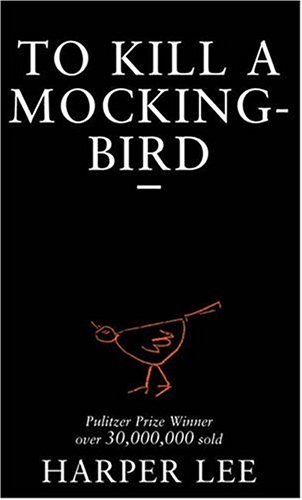Building on the typographic/ layout designs below I produced 3 initial designs using the different layouts and opting for different illustrations and styles.
For this cover I illustrated a tree as seen in some over the other covers that the tyre swing hangs off. I chose the green as thought it was relevant to the illustration, sticking to one colour keeps the cover looking professional and classic. The relevance of the tree is there is one in front of Boo Radley's place and it is significant to the novel as alot happens around it such as Jem and Scout finding two pennies in the hole of the tree one day.
For this cover I drew from a lesser known symbol in the book - flowers. I illustrated some flowers beside a bird as I thought the two together would work well. The colours I chose reflect the coexistence of good and evil in the book, I used yellow and grey as I didn't know if black and white would be too bold.
For this design I used the shape of Alabama - the state in which the novel is based repeatedly to create a pattern whilst using the quote from the lawyer to emphasise the name of the novel. I wanted to create something different to the standard mockingbird image and this obscure looking pattern does this.
Feedback:
They're really cool, maybe change the spine writing on the red one to white though so it would be more noticeable on a shop shelf?
I like the second one best I think the colours work best
The quote on the third one you use for the title may need to be moved to the back as it is part of the paragraph
Taking this advice on board I am going to go forward with the 2nd design as it holds the most potential rather than wasting time on fixing the others or trying to make them something they aren't.





















